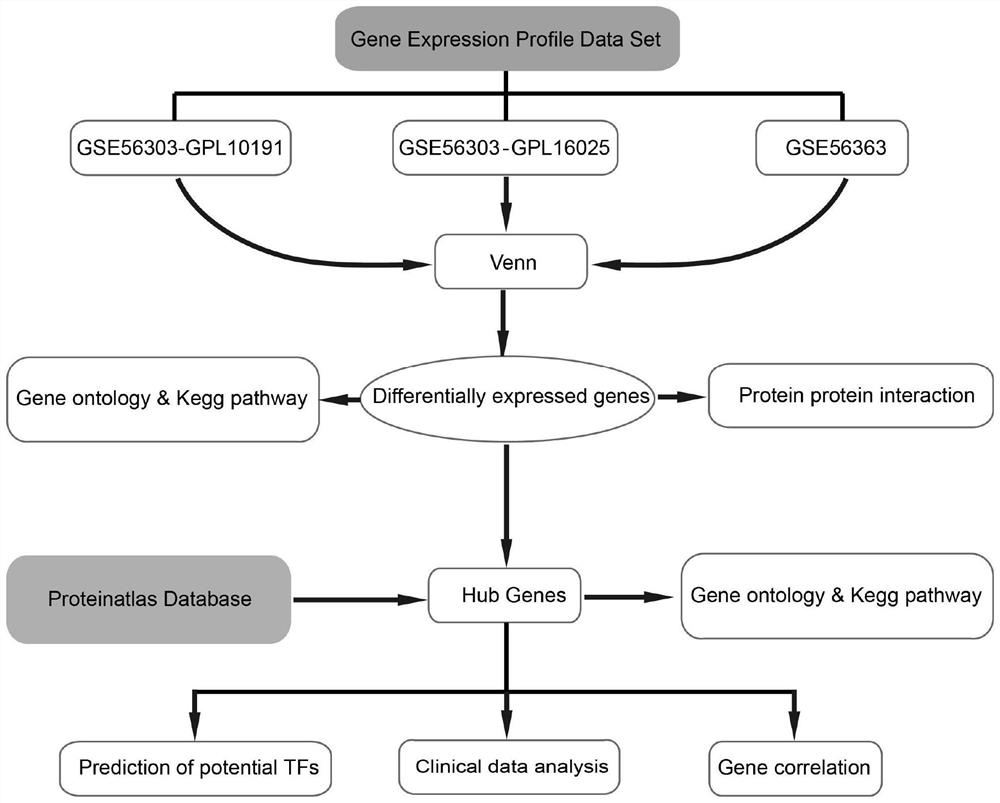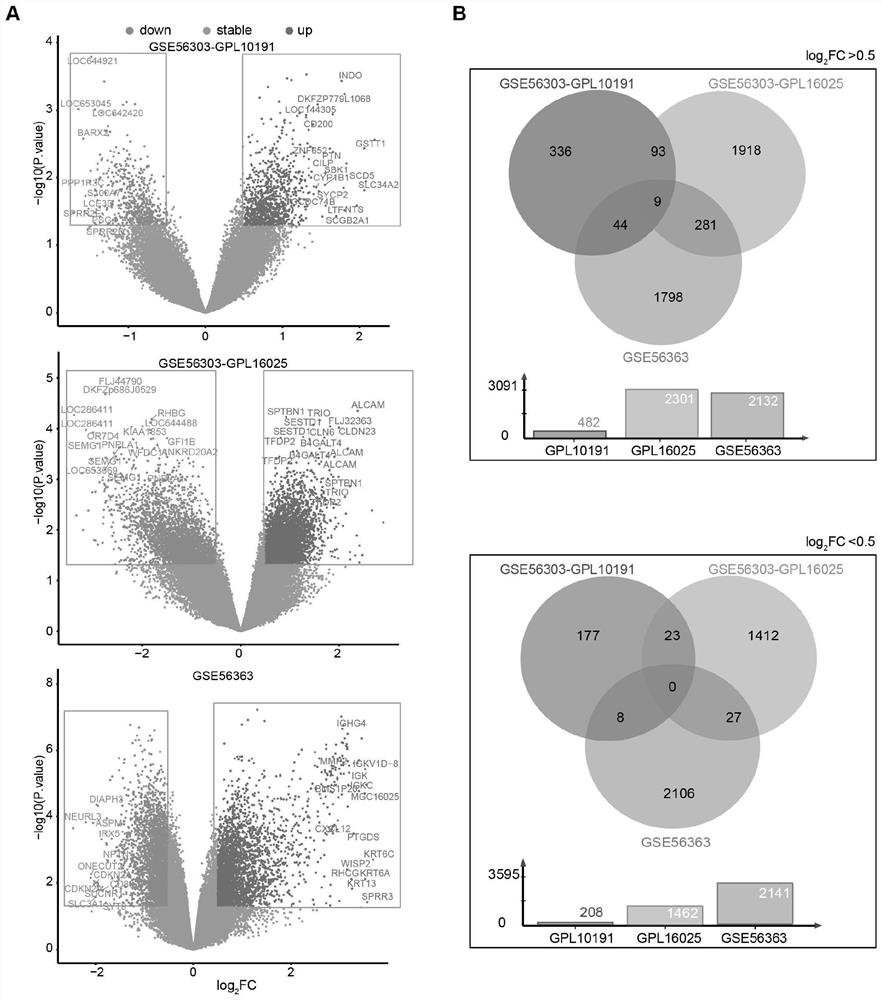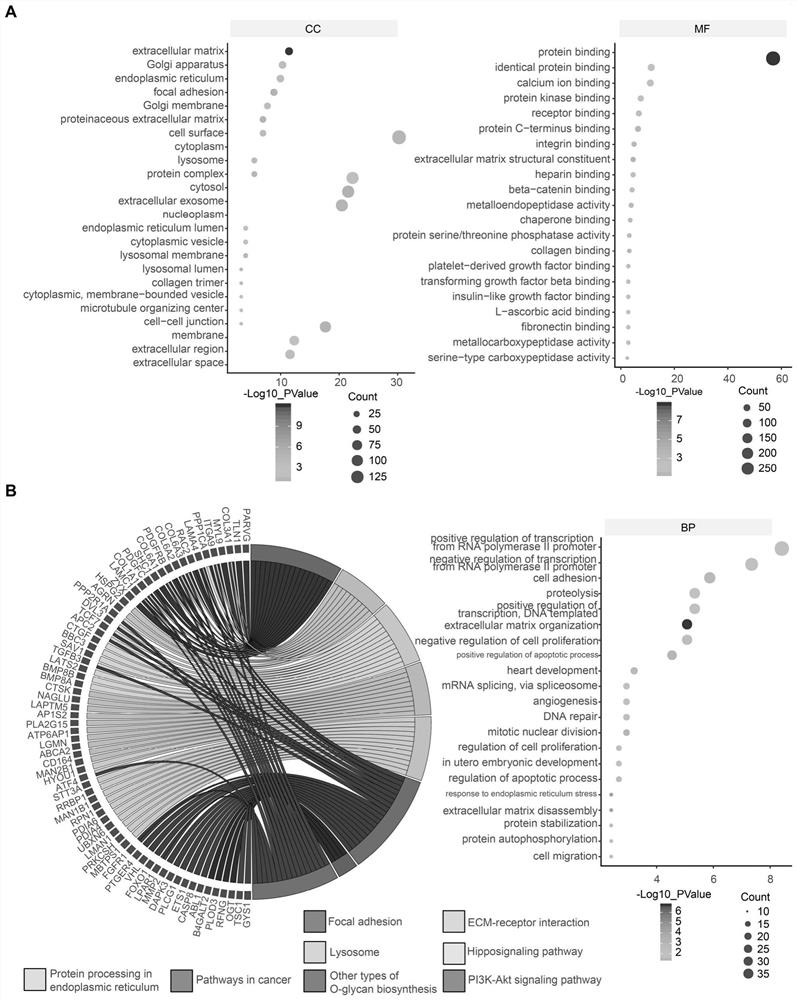Marker for predicting chemotherapy effect of cervical squamous carcinoma and screening method and application of marker
A technology for cervical squamous cell carcinoma and screening methods, applied in biochemical equipment and methods, measuring devices, biostatistics, etc., can solve problems such as uncontrollable expression of oncogenes and tumor suppressor genes
- Summary
- Abstract
- Description
- Claims
- Application Information
AI Technical Summary
Problems solved by technology
Method used
Image
Examples
Embodiment 1
[0049] Example 1 Screening and Obtaining Differential Genes Related to Radiotherapy and Chemotherapy Effects of Locally Advanced Cervical Squamous Cell Carcinoma
[0050] 1. Search the GEO database for expression profile data sets related to radiotherapy and chemotherapy for locally advanced cervical squamous cell carcinoma. The search keywords are: "(locally advanced cervical squamous cell carcinoma) and (chemoradiotherapy OR radiotherapy OR radiation)", and the research types are limited to: expression profiling by array, restricted species: Homo sapiens. The selected data must meet the following conditions: (1) the data set must be the expression mRNA chip data of the entire cervical cancer genome; (2) the data must be a controlled study on the effectiveness and ineffectiveness of combined radiotherapy and chemotherapy for locally advanced cervical squamous cell carcinoma; (3) The data set case(responders)-control(non-responders) group must contain or exceed 3 samples; (4) ...
Embodiment 2
[0058] Example 2 predicts the transcription factor of the target gene
[0059] 1. Further use the NetworkAnalyst tool to predict the transcription factors that can regulate the expression of SRSF7, SNRPB, SNRPA, SF3A2 and PQBP1. We found that ZBTB7A, TFDP1 and ELF1 can regulate the expression of these five genes ( Figure 7 A).
[0060] 2. Correlation analysis showed that ELF1 was negatively correlated with SNRPB, SNRPA, and PQBP1 ( Figure 7 C).
[0061] 3. To find the ELF1 sequence, we used JASPAR analysis. From the sequence logo of ELF1, it can be seen that the sequence of ELF1 is higher in the 7-10 conservative type, and the frequency of G and A bases is very high ( Figure 7 D).
[0062] 4. We predicted the binding sequences of ELF1 and SNRPB, SNRPA and PQBP1 through JASPAR, and the results showed that ELF1 combined with the upstream of these genes. In this study, the 90% threshold was used for scoring, where the relative score of SNRPB was 0.9066, the relative scor...
Embodiment 3
[0063] Example 3 Verification of the correlation between target genes and curative effect of radiotherapy and chemotherapy for locally advanced cervical squamous cell carcinoma
[0064] 1. Differences in the expression levels of target genes in locally advanced cervical squamous cell carcinoma radiotherapy and chemotherapy sensitive and insensitive patients:
[0065] (1) Screen out the expression levels of target genes in three datasets (GSE56303-GPL10191, GSE56303-GPL16025, GSE56363);
[0066] (2) Divide the samples in the 3 data sets into the chemoradiotherapy-sensitive group and the insensitive progenitor;;
[0067] (3) For statistical analysis, the difference between the two groups of data was tested by t test, p-value0.5 were considered statistically significant.
[0068] (4) The expression level differences of target genes in locally advanced cervical squamous cell carcinoma sensitive to chemotherapy and insensitive patients are shown in Table 2:
[0069] Table 2 Diffe...
PUM
 Login to View More
Login to View More Abstract
Description
Claims
Application Information
 Login to View More
Login to View More - R&D
- Intellectual Property
- Life Sciences
- Materials
- Tech Scout
- Unparalleled Data Quality
- Higher Quality Content
- 60% Fewer Hallucinations
Browse by: Latest US Patents, China's latest patents, Technical Efficacy Thesaurus, Application Domain, Technology Topic, Popular Technical Reports.
© 2025 PatSnap. All rights reserved.Legal|Privacy policy|Modern Slavery Act Transparency Statement|Sitemap|About US| Contact US: help@patsnap.com



